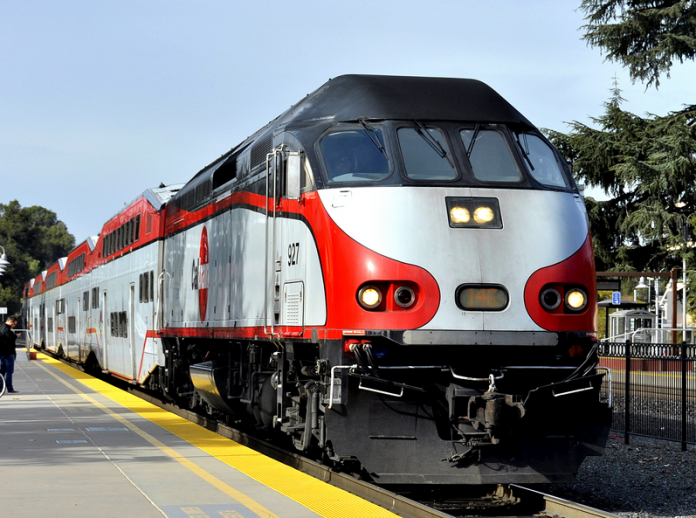Gilroyans who voted to tax themselves in November to improve local transportation may have a longer and trickier wait than they expected.
Even though Gilroy voters passed Measure B in November, the half-cent sales tax increase expected to generate $6.3 billion dollars for transportation improvements in the county over the next 30 years, the city council heard on Monday the fight for the projects that will most benefit Gilroy has just begun. The city will have to vie with projects in other parts of the county to get ahead.
“We need to make sure Gilroy is advocating very strongly to ensure our priorities are addressed in a timely fashion,” said Gilroy City Councilman Peter Leroe-Muñoz. “It’s a 30 year process and not every project will be financed in year one.”
Measure B projects that stand to benefit Gilroy the most were identified on Monday as the proposed interchange at Highway 101 and Buena Vista, Caltrain capacity improvements, the local roads program that is estimated to bring the city $1 million a year for street repairs, and increase in transit operations.
The Santa Clara Valley Transportation Authority (VTA), which is responsible for managing and rolling out Measure B improvements is currently working out details on how the projects will be prioritized and the money distributed, said Glen Roberts, Gilroy’s interim public works director.
“We are going to need to stay very active and involved and be strong advocates for these projects because there will be competing projects throughout the county and we want to make sure that Gilroy stays at the front of the line for our fair share of these improvements,” he told the council.
“A lot of these criteria are still being proposed and developed at a staff level,” continued Roberts. “It’s a work in progress; it’s not all as locked in as many people, myself included, thought it would have been based on the ballot measure.”
VTA media spokesperson, Stacey Hendler Ross said over the next two months guidelines will be worked out and vetted at the staff and committee level before coming before the VTA Board for final approval sometime in the summer.
While the details are currently being worked out, some of what has come out so far has not been so great for the growing south county city.
Referring to a VTA memo dated Feb. 17, Roberts said transit authority staff recommended the monies earmarked for local road improvements, of which Gilroy is estimated to receive $1 million a year, be given as a reimbursement versus a straight distribution.
“For some cities that may be very easy to do but for others whose cash flow is a little tighter in the streets budget – that may not be an equitable requirement,” said Roberts.
Hendler Ross confirmed the recommendation, but said it has not been finalized and has been taken to the policy advisory committee as an information item only.
Also, if there is enough pushback, staff could come back with a different approach, she said.
Councilman Daniel Harney, who sits on VTA’s policy advisory committee and was recently named an alternate to the Board of Directors, said a reimbursement policy would not be fair to the voters who supported the measure. “They have already paid,” he said.
Another item of concern for the city council was the proposed cuts to Gilroy’s bus routes, part of VTA’s Next Network, a radical reworking of the county’s transit network that will see Gilroy lose up to 50 percent of its coverage area. The VTA Board will vote on the redesign in April.
While Measure B earmarks $500 million for transit operations – to “provide additional funds specifically for bus operations to serve vulnerable, underserved, and transit dependent populations throughout the county,” if the proposed cuts go through, Gilroy may have to use Measure B funds to backfill the coverage gap resulting from the network redesign.
“It would be an appropriate use of Measure B funds to backfill the gaps, but it is unfortunate,” said Leroe-Muñoz. “We thought it would be used to supplement what we already had.”
The Highway 101 / Buena Vista Interchange may also not be completed as soon as Gilroy voters assumed as it will have to compete with other major projects identified during the Measure B fact-finding process.
To make the project more competitive, the council learned on Monday, the city may be asked to seek matching funds.
“VTA may ask Gilroy to fund part of it,” said Mayor Roland Velasco at the city council meeting.
According to the Measure B resolution, there is an estimated $750 million earmarked for Highway interchanges.
The city council also asked staff to get more information from VTA about Caltrain capacity improvements. The measure estimated $314 million to go towards expanding commuter train services, including increasing service to Morgan Hill and Gilroy.
Leroe-Muñoz, who works at the Silicon Valley Leadership Group, which spearheaded much of the promotion surrounding Measure B in the lead up to the election, said many of the details and criteria that are arising now did not come up during the campaign.
“VTA is still trying to work out a lot of the plans – there is a lot of uncertainty right now,” he said. “We are going to have to fight for our priorities.”
One way Gilroyans can participate in the process is to volunteer to sit on the Measure B oversight committee. The transit authority is looking for eight candidates. To be eligible a person must be registered to vote in Santa Clara County. The term will be four years. Applications are currently being accepted and are due April 21. For more information go to http://www.vta.org/measure-b-2016 or call (408) 321-5680.














